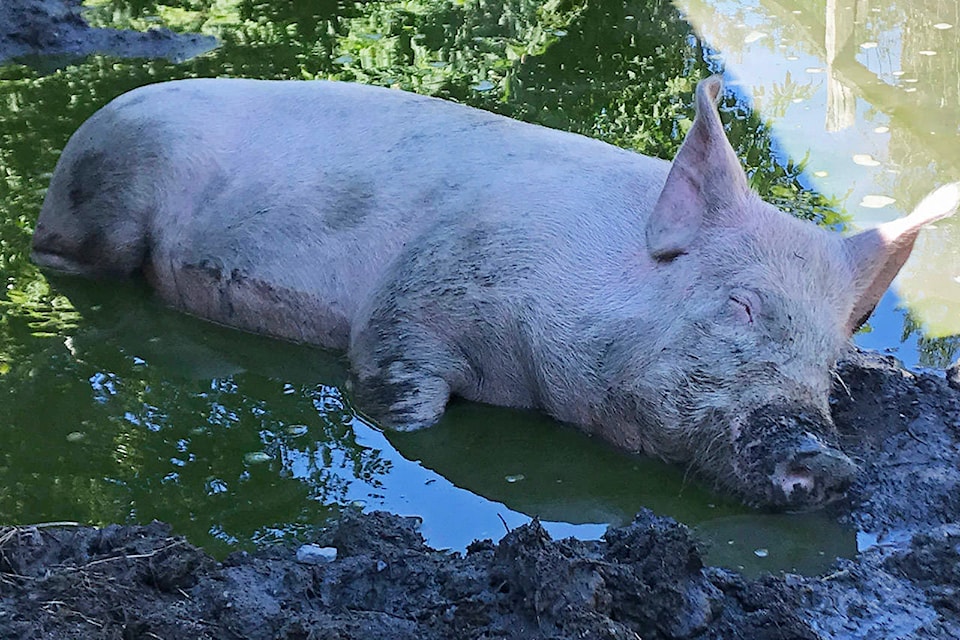Early in our ranching career many of our neighbours had pigs, often two: one for ourselves and one for sale which paid the purchased feed costs.
We all had beef, but then that is the business we are in. But the pigs were like gardening. Raising your own food can be a lot of fun and contribute to our healthfulness.
When it comes to higher life forms — sentient beings — moral questions are raised about keeping animals for human food.
In this day and age of consumers who are concerned about the welfare of animals in the food chain, we all have to be aware of animal welfare.
Read more: Fall time means herd management through pregnancy testing in the Cariboo
In 2016, a guru of mixed farming and grazing, Joel Salatin (now the editor of the Stockman’s Grassfarmer), released a book called The Marvelous Pigness of Pigs. The subtitle is “Respecting and Caring for all God’s Creations.”
Joel wears his brand of Christianity on his sleeve and he backs up his philosophy of care for pigs with plenty of quotes from the Bible.
Notwithstanding that Muslims and Jews, (even some Christians) don’t eat pork, this book reminds us the ethical side of stewarding the earth and all its creatures, especially pigs which is a major food source the world over.
I remind readers that in many parts of the world, Great Britain, Europe and Eastern America, pigs feed and finish themselves on acorns, the fruit of oak trees. Pigs can crunch the fallen nuts and thus not rely on grain and other feedstuffs.
However, in some confinement, yet with lots of land to roam, pastured pigs like to root with their noses and find feed in the topsoil or in the plants growing on the surface.
We have recently found success with growing a few acres of barley and field peas together and allowing the direct grazing of these immature and mature plants in order to entertain and give nutrition to the pigs.
The flavour of the pork is superior and there is a significant saving on the purchased grain needed to finish the pigs. Needless to say, they seem very happy to be turned out into these small pastures a bit at a time.
Typically, the last month of the growth of the pigs is on the mature peas and barley. We use two strand and one strand electric fence to keep the pigs in and, it seems, the predators out of the pen. Once we repelled a cougar which was stalking the piglets with the electric fence.
Read more: Prices and costs a balancing act in the ranching industry
We first put the pigs into a panel fenced pen and put a training electric fence inside between the pig house and the feed trough so they learn to avoid the electric wires. Should they run through it as they often do, if only once they get a shock, then avoid it.
Our pig pastures are up to one acre each which we subdivide to allow strip grazing of the pasture and the planted crop of peas and barley.
Happy pigs I say, and just the way creation meant it to be.
I caution pig owners about blaspheming the pigs when they escape, as it is usually our own ineptitude that allows that to happen!
David Zirnhelt is a rancher and member of the Cariboo Cattlemen’s Association. He is also chair of the Advisory Committee for the Applied Sustainable Ranching Program at TRU.
ANGIE CODE:
Do you have a comment about this story? email:
editor@wltribune.com
Like us on Facebook and follow us on Twitter.
